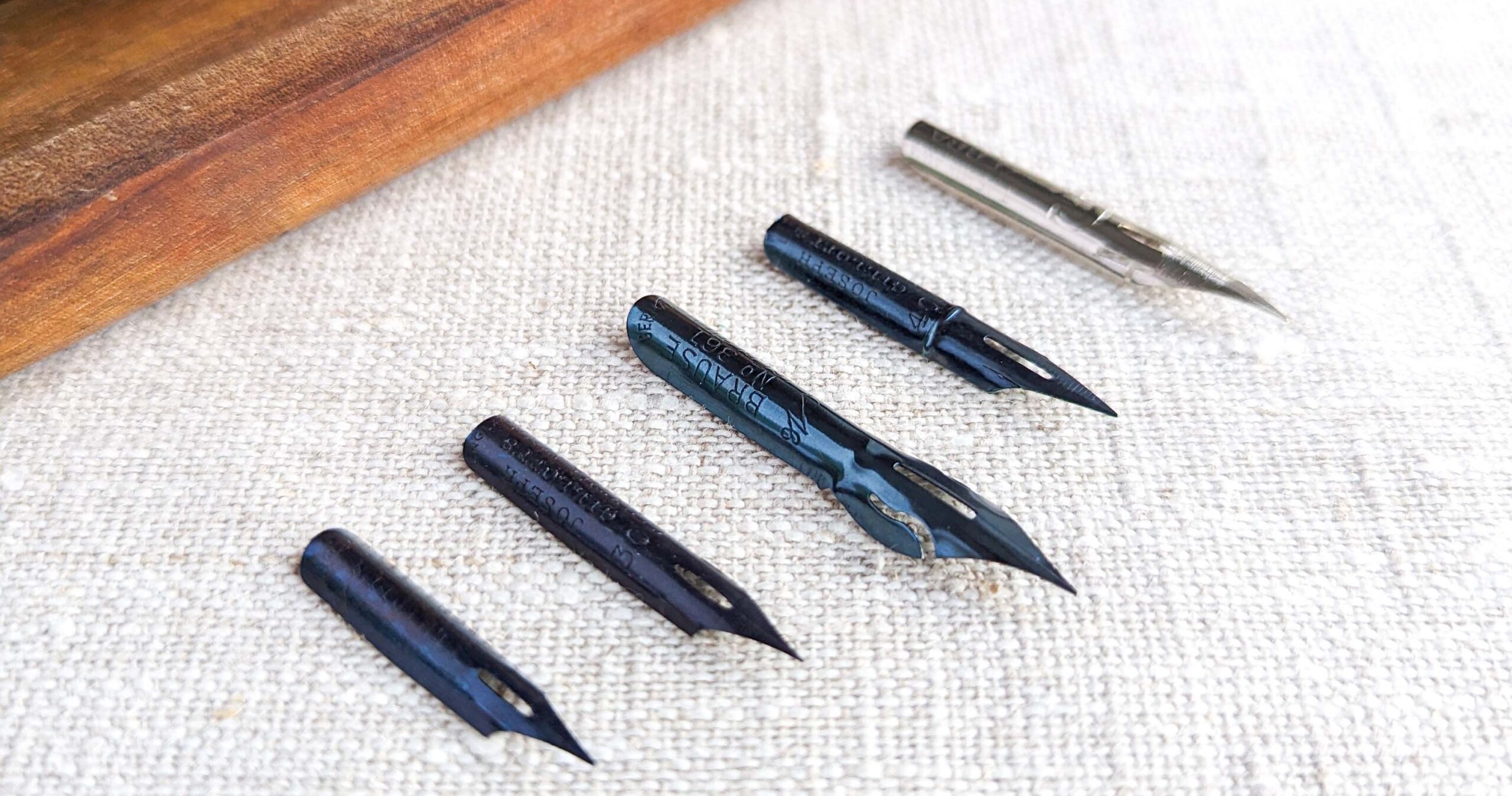
October 23, 2023
Which calligraphy nib should I choose?
Calligraphy stands as a timeless art that captures the true beauty of creativity and tradition. At the heart of this craft lies the essential tool – the calligraphy nib. These little but powerful tools come in different shapes and sizes, and you might wonder, what nib is right for me? And how do I know which nib to choose for my project? So, whether you’re a seasoned calligraphy enthusiast or a curious beginner, keep reading as we lift the veil on the captivating world of pointed calligraphy nibs.
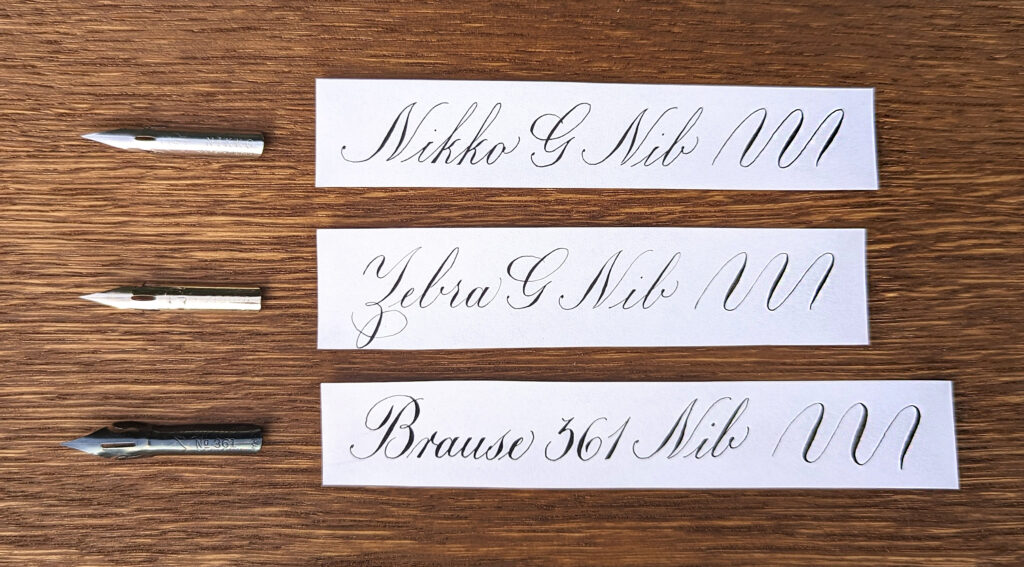
Nikko G – The Beginner’s Best Friend
- Sturdy – wont break under pressure
- Medium point – creates fine upstrokes, but does not catch
- Good for large writing
- Best choice for writing on textured or handmade paper

A Nikko G is the perfect nib to use when you begin your calligraphy journey. This nib is user friendly and easy to us, so it’s the ideal starting point. It’s particularly sturdy and won’t break under pressure. This element is ideal for when you are beginning to learn calligraphy as you can have confidence knowing your nib is durable. She is versatile and suitable for various writing types too. It’s very similar to a Zebra G, but I think it lasts a bit longer before becoming blunt.
Zebra G – A nib of endless possibilities
- Similar to Nikko G but thinner upstrokes
- Sturdy – wont break under pressure
- Also a good choice for writing on handmade paper

We meet another nib that is perfect for beginners but is also a firm favourite of professional calligraphers. Zebra G’s are Master Penman Michael Sull’s favourite nib to use for Spencerian writing. It’s built to last and is a classic and timeless nib. If you are looking for sweeping strokes and delicate precision then this is the nib for you.
Brause 361 – Affectionately known as “Blue Pumpkin”
- High flex – can make very thick downstrokes
- Suitable for large writing
- Most commonly used for modern calligraphy styles

Brause 361, Brause Steno, Blue Pumpkin… it has many names. This nib is not for the faint hearted as she adds a dash of drama to your calligraphy. It’s not for dainty, small scale writing. It’s robust and dynamic nature is best suited for larger projects and most commonly used for modern calligraphy styles. This is a really fun nib. It will make beautiful statement strokes and her thick down strokes will allow you to push your creative boundaries.
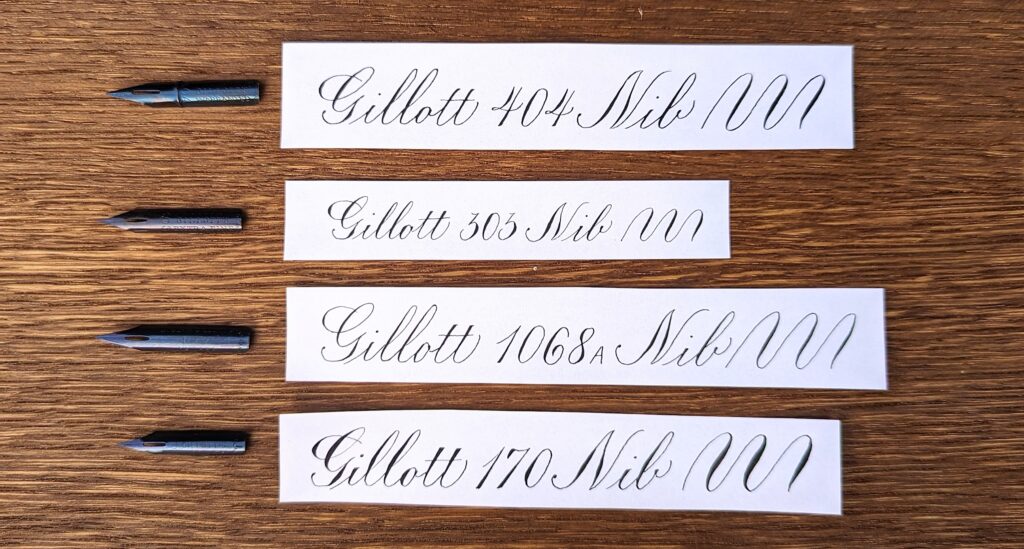
Gillott 404 – The nimble nib
- Very similar to a Nikko G nib
- Lighter pressure required as it has a finer point
- Suitable for small to medium sized writing
- A favourite of beginners

If you are on the quest for the ideal nib to add finesse to your writing, then this slender beauty is the one. The Gillott 404 has an uncanny resemblance to Nikko G. This is another nib that is hailed as the beginner’s best friend. It has a forgiving nature and approachable fine point makes it an ideal nib for beginners to explore the written world. This nib is suitable for small to medium sized writing and you can enjoy a lighter pressure approach with the Gillott 404. She has a graceful charm with her fine-pointed finesse, the Gillott 404 promises to add a touch of elegance to your creation.
Gillott 303 – Perfect for Copperplate
- A very fine point so requires light pressure
- Suitable for very small writing
- Creates incredibly fine upstrokes
- Delicate – may break or bend out of shape if too much pressure is applied
- Most commonly used for Copperplate

This nib calls for a delicate touch. The Gillott 303 nib is very fine and delicate, and may break or bend if too much pressure is applied. This nib is ideal for creating feathery light fine strokes and perfect for very small writing. This particular nib is your trusted companion if you are embarking on a project that requires precision and attention to detail. This fine point nib is most suited for Copperplate calligraphy as it has an exceptional ability to create hairline and graceful curves which fully embodies the copperplate style.

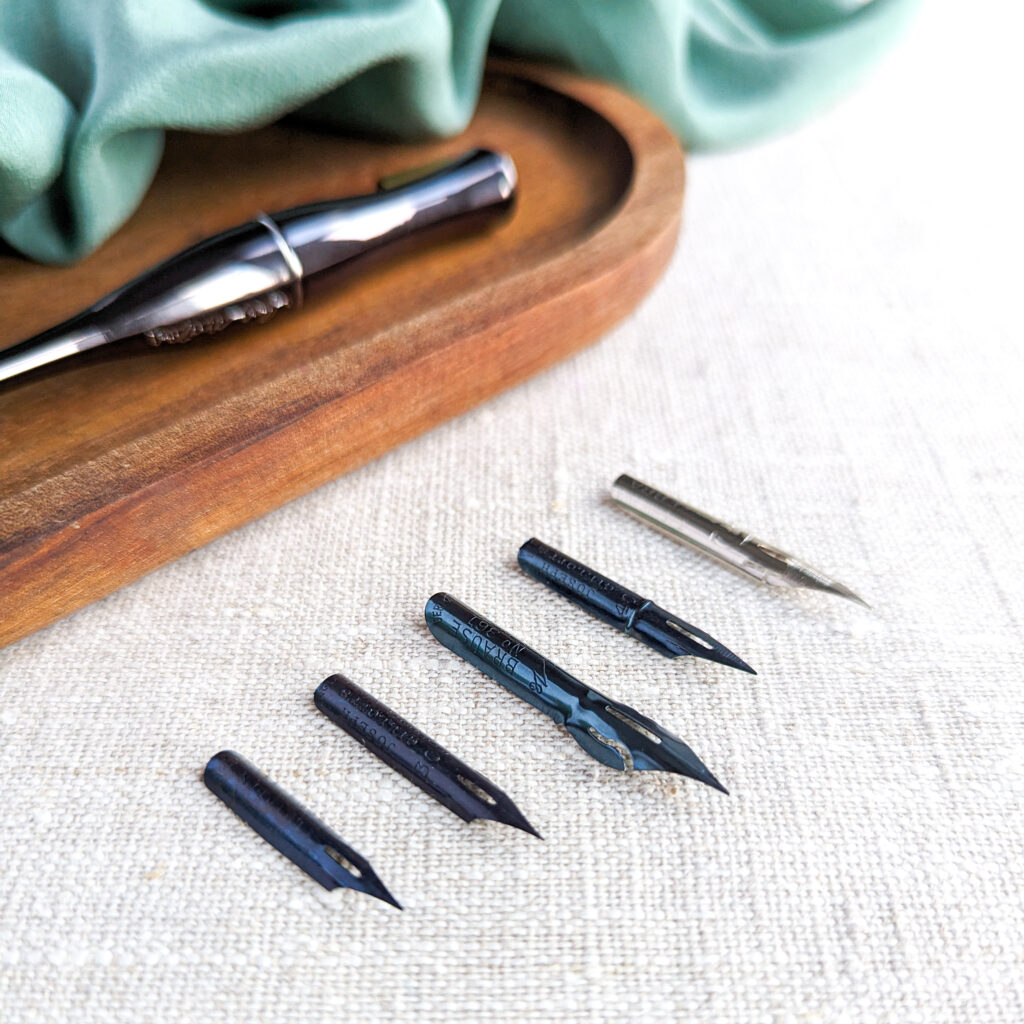
Gillott 170 – Versatile and delicate
- High flex – can make very thick downstrokes
- Suitable for medium to large sized writing
- Very fine point so unsuitable for textured or handmade paper
- Creates a really striking contrast

This “high-flex” nib has the ability to create bold and expressive down strokes even though it is tiny in size. The main thing to note is that this particular nib is not compatible with textured or handmade paper. If you were looking for these specialities, then a more robust nib would be better suited to the task at hand. The Gillott 170 nib creates a striking contrast and is a match made in heaven for medium to large sized writing.
Gillott 1068A – Like Nikko G but leaner and meaner
- Similar to a Nikko G but with less flex so creates thinner downstrokes
- A good nib to try if you are naturally heavy handed as it’s harder to create a strong contrast in the strokes
- It’s quite stiff so it can be suitable for Spencerian or a monoline script

The Gillott 1068A is the stiffest nib in the family and is most commonly used for Spencerian or a monoline script. The graceful curves of the Spencerian style is eye catching and graceful. This nib will allow you to create thinner down strokes and you will see there are similarities to the Nikko G nib. This nib is also a great one to use if you are naturally heavy handed.
My favourite nibs for…
- Everyday writing – Zebra g, Gillott 404
- Large writing in modern calligraphy – Brause 361
- Small writing – Gillott 303
- Writing on handmade paper or textured surfaces – Nikko g
- Spencerian – Gillott 1068A
- Large writing or bold titles – Gillott 170
Now, I encourage you to become lost in the enchanting world of calligraphy and the wonderful nibs which allow us to create such beauty. Try all of your different nibs and see what works best for you – and you never know, you might even fall in love with using a nib you had never tried before. You will begin to learn and express yourself in a way that you never have done before. Embrace the diversity of nibs and let your imagination take flight. Your calligraphy adventure awaits.
Did you know we include a new nib in every monthly Calligraphy Box. Grab your first box today – Subscribe
You can also purchase all these nibs in our Shop.
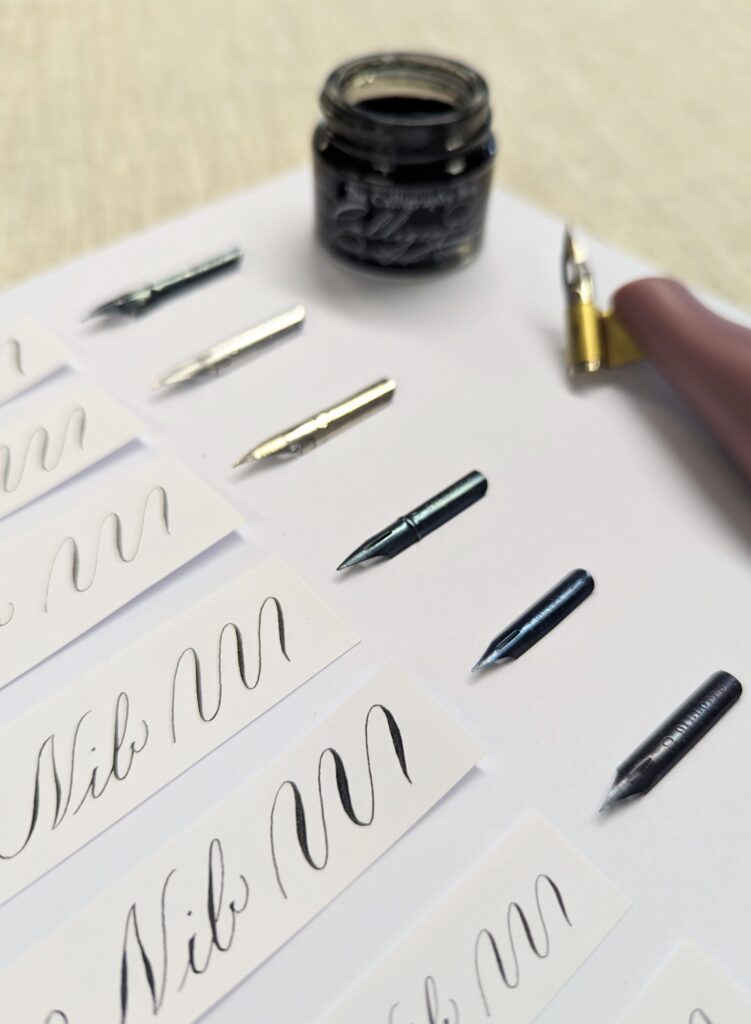
Really good descriptions of all the nibs.
Thanks for explaining and demonstrating the different uses. Very helpful and I look forward to trying these different nibs as I progress in my learning.
Thank you for this helpful information !
Very interesting guide to the different nibs and their uses.
Great guide to the different nibs. I can never remember what works best with which paper so this is a such a great article for reference. Thanks Jenni
Dear Sir / Madam
My handwriting is terrible. Calligraphy is the only method that provides legibility.
I was given a beginners calligraphy set. The broad nibs make all the difference to my handwriting.
It helps me to slow down and form letters properly.
I want a nice fountain pen with a broad calligraphy nib for everyday practical use.
So far I have bought two new fountain pens – but the nibs are fine and can not be replaced with a broad tip.
I would like a proper fountain pen – just like the ones we used in school before ball points were invented.
Your advice is greatly appreciated
Wonderful article clarifying the how &when & why each nib is best used for!
Thank you for the tips for paper type, writing size & calligraphy style each nib is best suited for. I’ve been doing calligraphy off & on for 6 ½ years, & I’ve never seen a breakdown like this. It’s extremely useful.